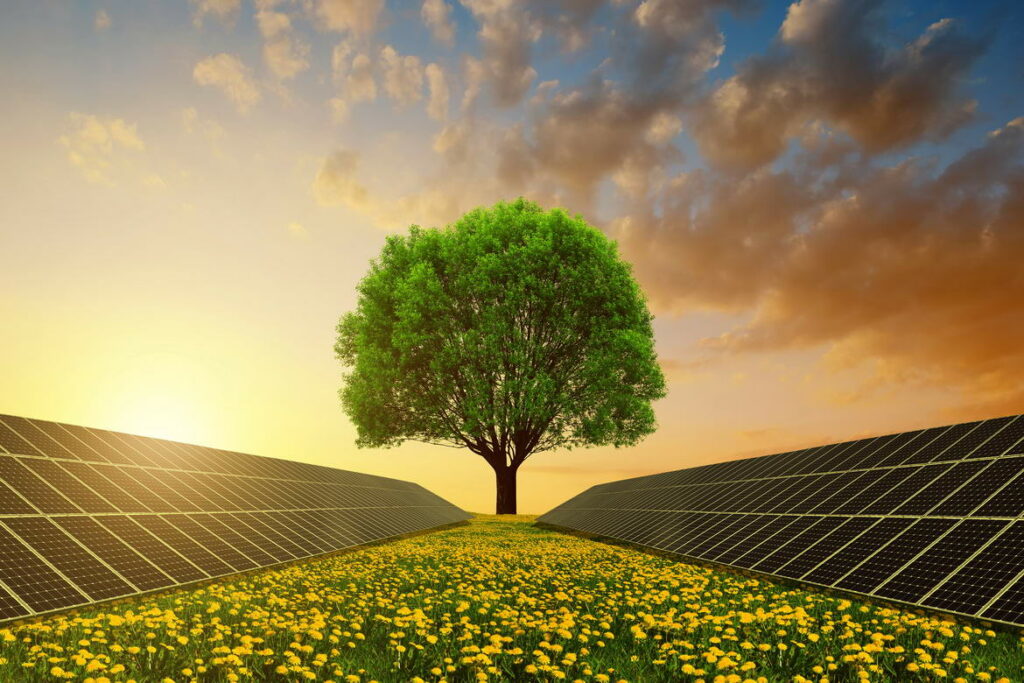Green renewable energies are forms of energy that are generated from sources that are naturally replenished and have little to no impact on the environment. These sources include solar, wind, hydro, geothermal, and biomass. Contact the team today at Solares Energies and ask about our renewable energy products and services, from Heat Pumps Marbella to Home EV Car Chargers Marbella to Solar Panel Systems Costa del Sol.
- Solar energy is generated by capturing the energy of the sun’s rays and converting it into usable electricity. This can be done using photovoltaic cells, which are commonly installed on rooftops or in large solar farms.
- Wind energy is generated by harnessing the power of wind turbines, which convert the kinetic energy of the wind into electrical energy.
- Hydro energy is generated by using the power of moving water, such as in hydroelectric dams or tidal power plants.
- Geothermal energy is generated by harnessing the natural heat of the earth’s core, which can be used to generate electricity or provide heating and cooling for buildings.
- Biomass energy is generated by burning organic materials, such as wood chips or agricultural waste, to generate heat and electricity.
All these renewable energy sources are considered “green” because they do not emit greenhouse gases or other pollutants that contribute to climate change or air pollution. They also have the potential to reduce our dependence on non-renewable sources of energy, such as coal, oil, and natural gas, which are finite resources that contribute to environmental degradation.
What Are Renewable Energies?
Renewable energies are forms of energy that are derived from sources that are naturally replenished and are sustainable over the long term. These sources of energy include solar, wind, hydro, geothermal, and biomass.
Unlike non-renewable energy sources, such as fossil fuels (coal, oil, and gas), which are finite resources that will eventually run out, renewable energies are constantly replenished by natural processes and can be used indefinitely without depleting their supply.
Renewable energies are an important component of the transition towards a more sustainable and low-carbon energy system, as they emit little to no greenhouse gases or other harmful pollutants that contribute to climate change and air pollution. They are also becoming increasingly cost-competitive with traditional fossil fuels, making them a viable option for meeting the world’s growing energy demand while reducing the environmental impact of energy production.
Types Of Renewable Energies
There are several types of renewable energies that are currently being used or developed around the world. Some of the most common types include:
- Solar energy is generated by capturing the energy of the sun’s rays and converting it into electricity through photovoltaic cells or concentrated solar power systems.
- Wind energy is generated by harnessing the power of wind turbines, which convert the kinetic energy of the wind into electrical energy.
- Hydro energy is generated by using the power of moving water, such as in hydroelectric dams or tidal power plants.
- Geothermal energy is generated by harnessing the natural heat of the earth’s core, which can be used to generate electricity or provide heating and cooling for buildings.
- Biomass energy is generated by burning organic materials, such as wood chips or agricultural waste, to generate heat and electricity.
- Ocean energy is generated by harnessing the power of the ocean’s waves, tides, and currents through technologies like tidal turbines and wave energy converters.
- Hydrogen fuel cells is generated by using renewable electricity to split water into hydrogen and oxygen, which can then be used to power vehicles and other applications.
Each type of renewable energy has its own unique advantages and challenges, and the optimal mix of technologies will depend on local resources, infrastructure, and energy demand.
How Can Renewable Energies Help Me Reduce My Carbon Footprint?
Renewable energies can help you reduce your carbon footprint by providing low-carbon alternatives to traditional fossil fuel-based energy sources. When you use renewable energy to power your home, vehicle, or other activities, you are reducing the number of greenhouse gases that are emitted into the atmosphere, which helps to mitigate climate change.
For example, if you install solar panels on your home and use that solar energy to power your appliances and heating and cooling systems, you can significantly reduce your dependence on grid electricity, which is often generated from fossil fuels like coal and natural gas. This can lead to a reduction in your carbon footprint, as solar energy does not emit any greenhouse gases during operation.
Similarly, if you drive an electric vehicle (EV) that is charged with renewable electricity, you can significantly reduce your transportation-related emissions. EVs do not emit any greenhouse gases during operation, and if they are charged with renewable electricity, they can be considered a truly zero-emission transportation option.
By transitioning to renewable energy sources like solar, wind, and hydro, we can reduce our reliance on fossil fuels and help to mitigate climate change. In addition, renewable energy technologies are becoming increasingly cost-competitive with traditional fossil fuels, making them a viable option for many households and businesses.
